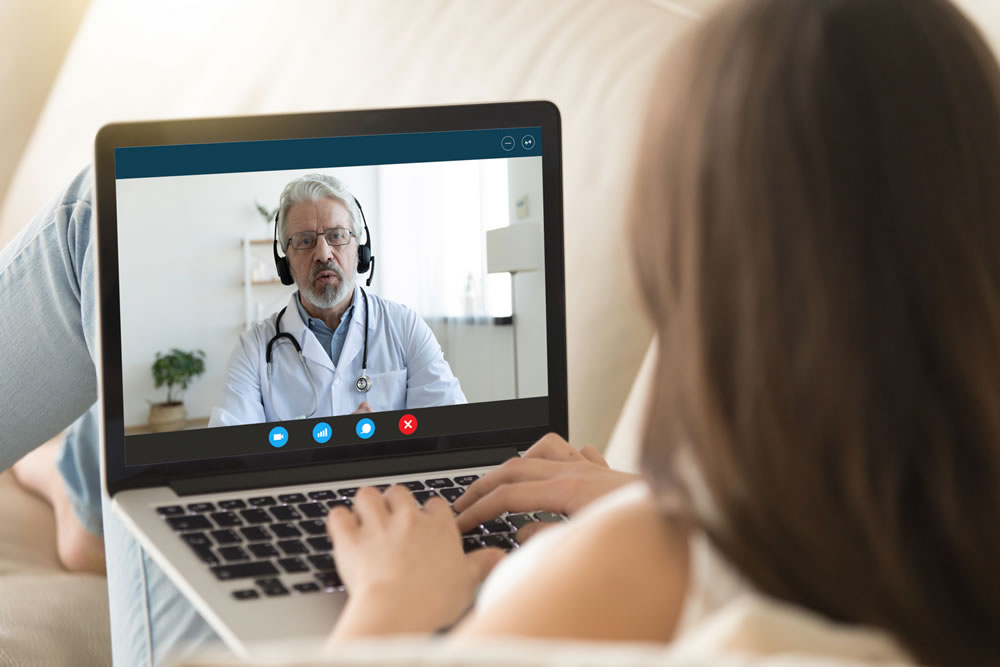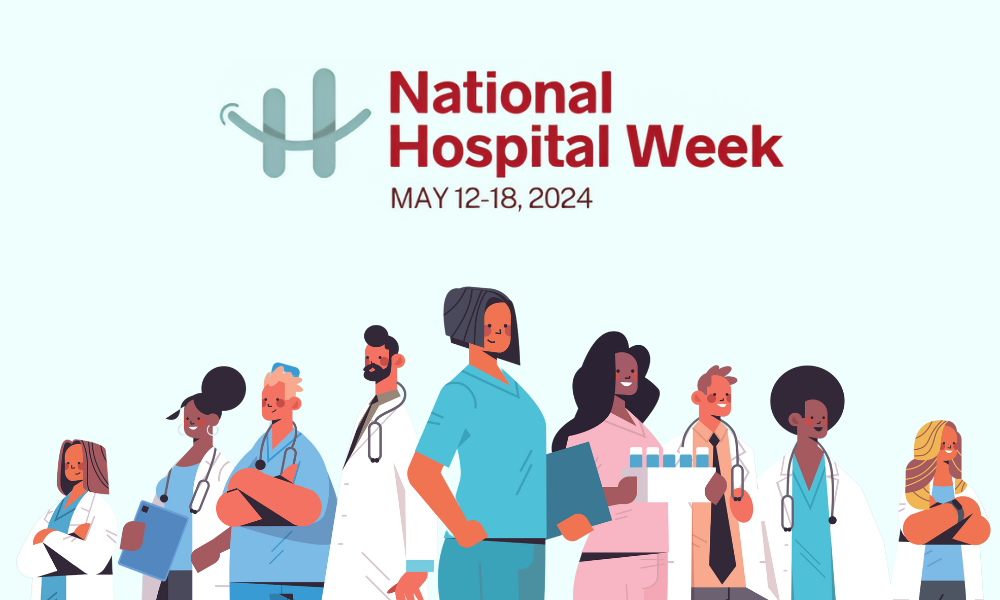This is the second of a six-part series about lessons learned from the COVID-19 pandemic, inspired by a conversation with Interim Physicians Medical Director Ken Teufel, MD
Lesson #2: While not a replacement for in-person office visits, telemedicine can be highly effective in maintaining continuity of care and managing care costs
For the locum tenens industry (and providers generally), this means insurers, including the Centers for Medicare and Medicaid Services (CMS), must continue to reimburse for telemedicine after the COVID-19 National State of Emergency has ended.

In an April 28 blog post, AAFP (American Academy of Family Physicians) Senior Vice President Shawn Martin observed, “As we draft the blueprints for the future of family medicine, we must make certain that we are not constrained by 20th-century constructs and, instead, embrace the opportunities of incorporating 21st-century technologies into the practice of family medicine.”
He quoted a “tweet” by Florida family physician Randa Perkins, MD, who asked why family medicine hadn’t rebranded telemedicine as “modern house calls.”
Acknowledging her point, Martin noted that family medicine should not only embrace telehealth, but also ensure these services are part of comprehensive family medicine practice. “To date, we have largely viewed telemedicine as a tool (like an X-ray) versus a modality of care, which has resulted in draconian rules and regulations governing its use.” Martin suggested that as family physicians and patients gain more comfort with virtual consults, we will “create a more patient-centric delivery model.”
Relaxed Regulation Encourages Telemedicine Adoption
Perhaps the COVID-19 pandemic is helping to effect Martin’s prediction–and the federal government is encouraging the transition. CMS has unleashed “an unprecedented expansion of telehealth services covered by Medicare,” allow(ing) patients to visit doctors virtually, reducing potential exposure to the virus.
To ensure continuous care for America’s seniors as the COVID-19 virus spread, the Trump Administration expanded Medicare coverage for 80 additional telehealth programs. CMS offered the COVID-19 Telehealth Toolkit to encourage state governments, which administer the Medicaid and Children’s Health Insurance Programs (CHIP) jointly with CMS, to follow suit in covering telehealth services for the more-than-71-million Americans (including 35 million children) who are covered under Medicaid and CHIP. In some states this means reimbursing providers for virtual visits via smartphone, and urging private insurers to do the same.
“While not all patient interactions can be delivered through telehealth, our clinicians on the frontlines need every tool in their arsenal to fight this invisible enemy,” CMS Administrator Seema Verma said.
Healthcare industry data show that broader adoption of telehealth was already well underway before COVID-19 hit. According to results of a recent survey from Merritt Hawkins and the Physicians Foundation, almost half of physicians (48 percent) were treating patients through telemedicine in 2019, up from 18 percent in 2018.
Quoting Forrester Research, Nikkei Asian Review staff writer Rintaro Tobita recently noted that about one billion online doctor visits are expected in the U.S. alone this year — 28 times what was projected before the outbreak. “Teladoc Health, one of the leading US providers of virtual care, charges $49 or less per visit. It now counts about 43 million users,” Tobita wrote.
He noted that China, which had about 19 doctors per 10,000 residents in 2016 (compared with 26 in the US and 24 in Japan), has started covering telemedicine through public insurance as a way to ease its provider shortage.
Locum Tenens + Telemedicine Could Hasten COVID-19 Recovery
It appears the coronavirus pandemic has increased the urgency for similar changes in the United States. Recent Primary Care Collaborative survey results highlighted by Medical Economics shed some light on the extent to which COVID-19 has devastated private medical practices.
“The survey, which received more than 1,000 respondents between April 17 to April 20, paints a grim picture of the financial health of practices across all 50 states, with 57 percent of respondents saying less than half of their work is reimbursable,” Medical Economics writer Keith A. Reynolds observed.
He also pointed to crippling staff absences created by COVID-19 illness or quarantine indicated by the survey results. For example:
- 41 percent of practices reported physician/NP absences
- 42 percent reported nurse absences
- 30 percent reported front desk staff absences
For US healthcare providers trying to recover both patient wellness and “bread-and-butter” revenue lost during the first half of 2020, perhaps hiring locum tenens clinicians and using telehealth consultations where possible is a staffing plan worth considering.
According to Staff Care’s 2020 Survey of Physician Staffing Trends, although only six percent of responding healthcare facility executives or managers envisioned utilizing locum tenens providers to deliver telemedicine services in 2019, their responses represented a five-percent increase over the past five years.
Consistent with this trend, LocumTenens.com added telemedicine to its service offerings several years ago. Along with cost-effectiveness, the company cited advantages of telemedicine including better work-life balance for clinicians and increased patient access to care.
On April 29 the healthcare staffing firm announced a partnership with ViTelNet that will “bring a new dimension to LocumTenens.com’s telehealth services by using ViTel Net’s vCareCommand™ cloud platform.
“LocumTenens.com clinicians provide fractional coverage or fill staffing voids for health systems, allowing patients access to healthcare providers wherever, whenever needed,” according to the companies’ joint news release. In addition, ViTelNet “configured its integrated solution to LocumTenen.com’s workflow specifications” to offer a seamless virtual-visit solution.
High-Speed Internet Availability Required
While applauding the great strides being made in telemedicine, Interim Medical Director Ken Teufel (Dr. Ken) recently pointed to one key challenge in all of this: “One of the frequently cited features of telemedicine is that Americans living in rural and more remote locations will have better access to health care services…Unfortunately, more than a quarter of rural residents—12.4 million people—lack the minimum broadband speeds needed by most telemedicine services, according to the Rural Health Information Hub. Lack of widespread access to high-speed internet is an often overlooked barrier to telemedicine’s growth potential.”
The Primary Care Collaborative’s survey results recently highlighted in Medical Economics back Dr. Ken up:
“One bright side of the pandemic has been the widespread adoption of telehealth services to help shore up business, but that has come with its own challenges, as 65 percent of respondents say they have patients who can’t use the services due to a lack of computers or internet. The expansion of the services has been limited with 40 percent of respondents relying mostly on video, 13 percent relying on e-visits, and 16 percent relying on patient portals. For comparison, 44 percent are conducting the majority of their telehealth visits by telephone, according to the survey.”








